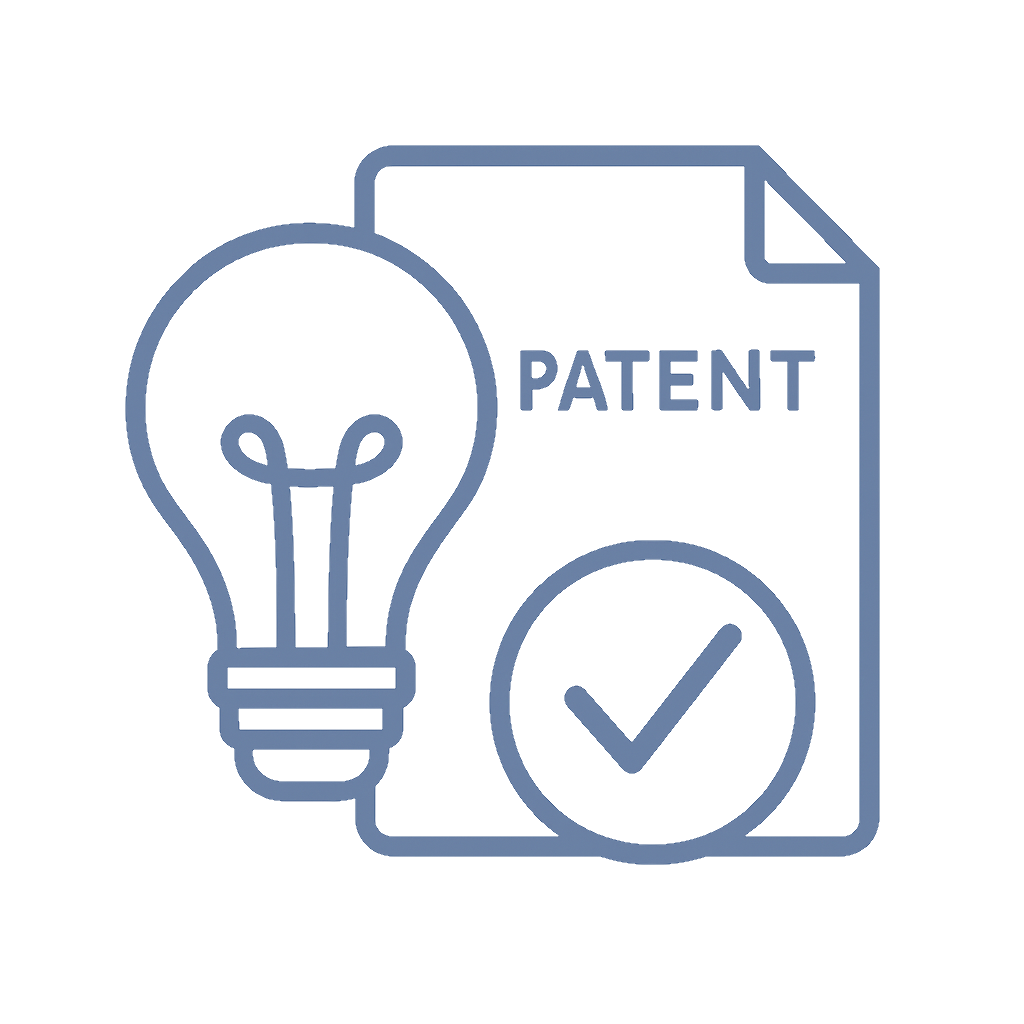Quick Overview
Artificial Intelligence (AI) is revolutionizing creativity, but it’s also challenging traditional intellectual property (IP) laws. As AI generates everything from art to inventions, who owns the rights? Can non-human creators even hold IP protections? This article explores AI's emerging role in IP, from ownership issues and potential benefits to the risks and legal precedents shaping this complex landscape.

Common Questions & Answers
-
Can AI own IP rights?
Currently, IP rights are only available to humans or legal entities like corporations. AI is viewed as a tool, not an independent rights-holder. -
Who owns AI-generated works?
Ownership is usually assigned to the person or company that developed, commissioned, or operated the AI, but each case can vary based on jurisdiction. -
How can AI benefit IP management?
AI assists in patent searches, monitors for IP infringements, and can streamline IP filing processes, enhancing protection and enforcement.
Step-by-Step Guide
-
Identify IP Needs
Pinpoint what form of IP protection your AI-driven project requires—patent, trademark, copyright, or trade secret. -
Establish Ownership Contracts
Specify IP ownership in contracts for AI-created works, especially if multiple parties are involved in the AI’s development or operation. -
Monitor for Infringement
Use AI tools to detect and prevent unauthorized uses of your IP, keeping regular checks to avoid infringement from AI-generated works. -
Ensure Regulatory Compliance
Align with IP and data privacy laws, particularly in sensitive data use or scenarios where AI replicates existing copyrighted works. -
Prepare for Disputes
Have a process for handling disputes, as ownership, infringement, and ethical considerations will likely continue to arise as AI evolves.

Historical Context
Intellectual property law has its roots in early inventions and creative arts, with patent law dating back to the Venetian Republic in the 15th century and copyright emerging in 1710 with the Statute of Anne in England. These laws incentivized human creativity by guaranteeing creators exclusive rights. However, modern IP law primarily focuses on human authorship, and current frameworks don’t account for non-human creators, like AI.
With the advent of AI, content creation has moved beyond human hands. Courts and policymakers are now revisiting these laws to determine if, or how, non-human creations fit into traditional frameworks. This historic shift challenges the foundations of IP law, spurring ongoing debates on whether ownership rights should apply to works created without human input and what it means for protecting and valuing human creativity.

Business Competition Examples
-
OpenAI's ChatGPT
Known for generating conversational text, ChatGPT raises questions of IP ownership for businesses using it to create content. OpenAI’s policy currently places ownership with the user, not the AI, allowing companies to retain rights to AI-generated outputs. -
DeepMind's AlphaFold
This AI model predicts protein structures, a breakthrough for the pharmaceutical industry. As AlphaFold creates unique structures, IP questions arise over whether the AI’s findings should be patented by its users or remain publicly accessible. -
Sony's Flow Machines
This AI software composes music, complicating the question of authorship. Should the rights to these musical compositions belong to the company, the AI, or the artist who uses it as a creative tool? Sony retains IP ownership, but these creations set a precedent for IP rights in AI-assisted art.
![]()
Discussion
AI’s ability to produce original creations forces businesses to reconsider traditional IP. For example, AI-generated art, like music composed by Flow Machines or text from ChatGPT, blurs the lines between tool and creator. Businesses must address IP ownership and infringement proactively, as misuse or lack of clarity in AI’s creations can lead to legal consequences.
As AI models develop, companies face the dual task of protecting their investments in AI and ensuring they don’t infringe on others’ IP. This balancing act requires careful legal frameworks and a clear understanding of how AI fits within existing IP laws. The ongoing dialogue between tech companies, legal experts, and regulators aims to establish rules that protect both human creativity and AI-driven innovation.
![]()
The Debate
Side A: Grant IP Rights to AI-Generated Works
- Proponents argue that assigning IP rights to AI-generated works rewards the creators of AI technology, driving further investment in AI innovation.
Side B: Limit IP Rights to Human Authors
- Others believe that IP should protect only human-generated work. They argue that diluting this standard could undermine IP’s purpose: to encourage human creativity and authorship.
Side C: Case-by-Case Basis
- Some advocate for flexibility, suggesting that courts handle IP for AI on a case-by-case basis to ensure fairness and adapt to new technological developments as they arise.

Takeaways
-
Clearly Define IP Ownership Early
Define IP rights and responsibilities in contracts and licensing agreements when using AI in creative or business processes. Without clear guidelines, misunderstandings over ownership can arise, especially if AI-generated content gains value or recognition. By clarifying ownership early, you can avoid conflicts that may arise if an AI-driven project produces profitable or widely recognized content. -
Recognize AI’s Potential in Monitoring and Protecting IP
AI’s capacity for scanning vast data troves means it can detect potential infringements across multiple platforms, helping protect creators. Deploying AI for IP enforcement also gives companies a proactive tool to identify potential violations in real-time. This capacity can be especially valuable for companies with large IP portfolios, reducing human oversight burdens and streamlining compliance. -
Understand AI’s Role as a Tool, Not a Creator
Until laws evolve, it’s prudent to treat AI as a tool that aids human creativity rather than a source of independent creation. Recognizing AI’s role in enhancing creative processes rather than replacing human authorship maintains the spirit of IP protection. It also keeps IP grounded in a system that acknowledges human contribution, even as AI plays an instrumental role.

Potential Business Hazards
-
Risk of Ownership Disputes
Without predefined agreements on AI-created works, disputes over ownership can disrupt business operations, especially if multiple stakeholders claim IP rights. When conflicts arise, they can lead to costly and time-consuming legal battles, delaying the product or content's release. Companies should include IP clauses in contracts when AI is part of creation processes to avoid misunderstandings and to maintain a clear ownership path. -
Infringement Liability
AI-driven content generation carries a risk of unintentional infringement. For example, if an AI algorithm creates music that closely resembles an existing copyrighted piece, businesses could face legal action. To mitigate this risk, companies should monitor AI outputs and set up robust review processes to ensure that AI-generated content doesn’t unintentionally copy existing works. -
Data Privacy Violations
AI systems that process vast amounts of data raise privacy concerns, especially if personal information is used without consent. If AI accesses or uses confidential information to generate new content, it can violate data protection regulations, leading to potential fines and reputational damage. Companies using AI for IP creation should ensure compliance with data privacy laws to avoid legal repercussions.

Myths and Misconceptions
-
Myth: AI Can Be an Independent Rights Holder
False—current IP laws only recognize humans and legal entities, not machines, as rights holders. IP frameworks currently treat AI as a tool under human ownership, regardless of the content it creates. -
Myth: AI-Generated Content Is Free from IP Infringement Risks
Misconception. AI can inadvertently reproduce copyrighted material, meaning infringement is still possible even if the work was generated by an algorithm. -
Myth: AI Eliminates the Need for Human IP Management
In reality, human oversight is essential. While AI can assist in IP protection, it cannot fully replace the need for strategic human guidance and monitoring in IP management.

Book & Podcast Recommendations
- AI Superpowers by Kai-Fu Lee – Insightful on AI’s global impact and innovation potential, with relevance to IP implications.
- The Creativity Code by Marcus du Sautoy – Explores AI’s creative capacities, challenging traditional notions of authorship and IP.
- The Law of Artificial Intelligence – Offers an in-depth analysis of AI within legal frameworks, covering IP concerns in technology.

Legal Cases
-
Feist Publications, Inc. v. Rural Telephone Service Co.
This case, which emphasized originality as the basis of copyright, is central to the discussion of AI's capacity to produce original content. -
Naruto v. Slater
The “monkey selfie” case explored the limits of non-human IP ownership, providing a reference for current debates over AI's status in IP law. -
Apple Inc. v. Samsung Electronics Co.
A major case on design patents, which illustrates the complexities of protecting unique innovations in technology—relevant as AI-generated designs enter IP considerations.

Share Your Expertise
How has AI impacted your business’s approach to IP rights? Share your experiences in the comments, or reach out to discuss how to navigate AI-driven IP strategies effectively.

Wrap Up
As AI continues to blur the boundaries of creation and invention, businesses, creators, and policymakers must adapt. Navigating IP rights in an AI-powered world means balancing innovation with protection, and while the path forward is complex, staying informed and proactive is essential. By understanding AI’s role in IP, we can shape a future where technology enhances human creativity rather than competing with it.












